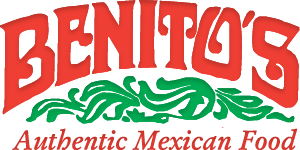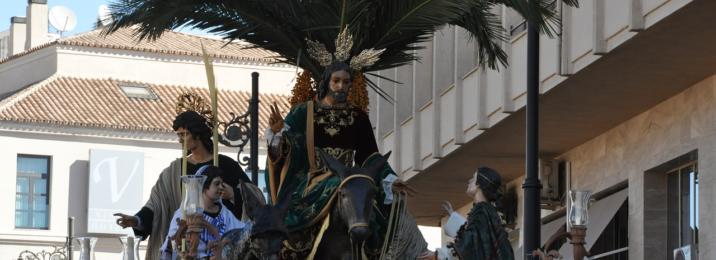Mexican Traditions for Easter and Holy Week
As a predominantly Catholic country, Easter is one of the most important holidays in Mexico. Unlike the rest of the world, in Mexico, Easter is celebrated over two weeks. The first week (the week leading up to Easter) is called Semana Santa or Holy Week in Mexico, and the second week (the week following Easter) is called Semana de Pascua. Easter is a wonderful time to visit Mexico and see all the elaborate celebrations first-hand. And, because schools are on holiday over this time, Easter is also a popular time for locals to go on vacation with their families.
Throughout the two-week celebration, Mexicans honor several traditions throughout their cities and towns. These elaborate and festive celebrations include many highly anticipated processions, ceremonies, and rituals. Below, we take a look at some of the most historical and popular Easter Mexican traditions. Let’s dive in!
Good Friday
As many of us know, Good Friday commemorates the crucifixion of Jesus. Creating a major focal point, most of the larger Semana Santa celebrations center around a reenactment of the capture, trial, and crucifixion of Christ. Actors selected to be part of these dramatic productions are known to deliver both brilliant and moving performances. Often, during the performance, the actor playing Jesus will wear a crown of thorns and carry a massive crucifix over a long distance to where the crucifixion scene takes place. Seen as a huge honor, these talented and dedicated actors will take months and months to prepare both physically and mentally for their roles.
Not only do the actors playing Jesus suffer physically, but in some more devout regions, locals will publicly inflict physical torture on themselves. In areas of Mexico (such as Taxco),people will show their faith by whipping themselves or carrying large religious objects on their backs for long distances. This ancient tradition dates back to the middle ages and was introduced to Mexico by the Spanish over 500 years ago.
Holy Saturday
In some Mexican towns, you’ll find another Spanish influence that takes place during the Holy Week—The Burning of the Judases. In Spain, carpenters would manufacture wooden dolls that represented Judas, which would be hung and burned in busy town squares. This eventually evolved into the current tradition where giant paper mache Judas figures are dressed and painted to resemble disliked political and public figures. The dolls are then hung up and blown up with fireworks, scattering parts in the streets, which kids scramble to collect as souvenirs!
Palm Sunday
Palm Sunday (the Sunday before Easter) marks the arrival of Jesus to Jerusalem. According to the Old Testament, Jesus traveled to Jerusalem on a donkey—and the people welcomed him by laying down palm branches along the path he walked throughout the streets. On Palm Sunday, many towns and villages throughout Mexico will recreate Jesus’ entry, and woven palms are sold outside the local churches.
Maundy Thursday
The Thursday of Holy Week in Mexico is known as Maundy Thursday or Holy Thursday. This day marks the washing of the feet of the apostles, the Last Supper, and the arrest of Jesus in Gethsemane. For Maundy Thursday, some Mexican traditions include various foot-washing ceremonies and, of course, Mass with Holy Communion.
Easter Sunday
While the rest of the world goes on Easter egg hunts and stuffs themselves full of chocolate, in Mexico, on Easter Sunday, you’ll find this is when people go to Mass and celebrate quietly with their families. After all the fun and festive celebrations over the past two weeks, you still might find some places where they will continue the festivities with fireworks, as well as jubilant processions with music and dancing.
Three Great Places to Celebrate Easter in Mexico
So, where are the best places to see all of these incredible Easter Mexican traditions? As mentioned above, Easter is celebrated throughout Mexico, but if you want to see something really special, here are three great destinations to visit and witness their local Easter traditions:
- Cholula, Puebla: In this small town just outside of Puebla, the floor of the town square is beautifully decorated with intricate tapestries made from sand and petals. On Good Friday, a large procession full of people carrying religious figures will make their way around the square, walking over the sand and petals.
- San Miguel de Allende, Guanajuato: On Good Friday, locals take part in ‘The Burning of the Judases’ by wrapping strings of firecrackers around large paper mache figures of Judas. The firecrackers are then lit, and the watching crowds cheer as the paper mache figures go up in flames.
- Mexico City: Just outside Mexico City, in the town of Iztapalapa, you’ll discover one of the most elaborate crucifixion plays. Traffic is slowed in the busy city streets as many locals leave the city to travel. If you are a tourist, for once you can enjoy the city without the busy crowds.
https://benitosmexican.com/wp-admin/admin.php?page=video-user-manuals/plugin.php
Visit Us Today
So there you have it, a little insight into the wonderful world of Easter Mexican traditions and celebrations. Now, how about enjoying some delicious Mexican culinary traditions? We’ve been proudly serving our loyal customers since 1981 with the likes of breakfast dishes, pico de gallo, fresh guacamole, queso flameado, and margaritas. Come and pop in today! At Benito’s, you’re always welcome.






